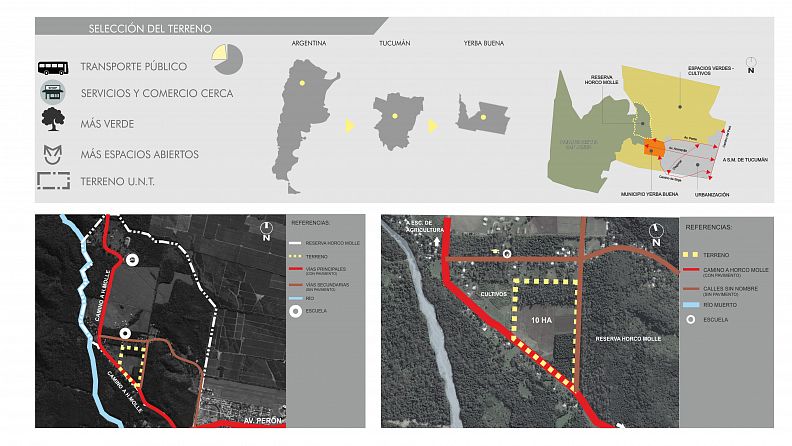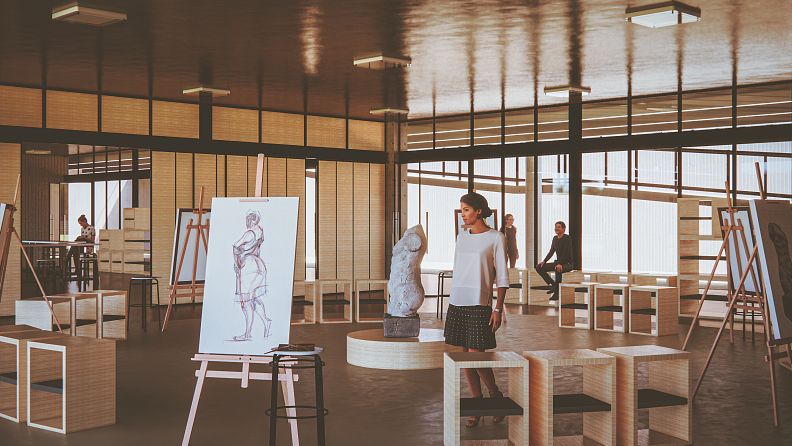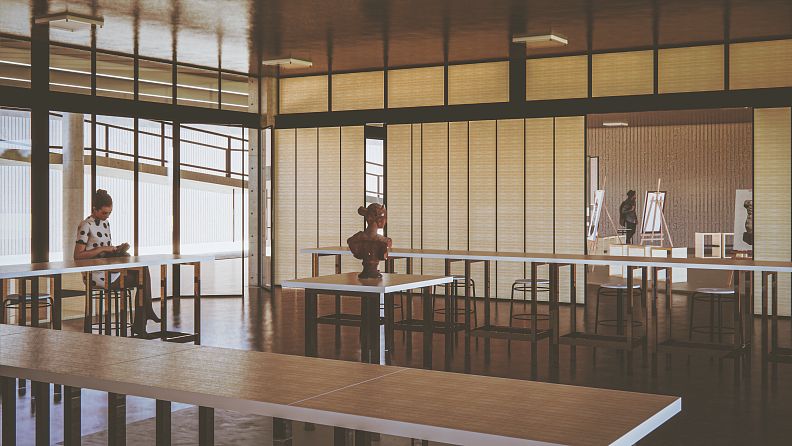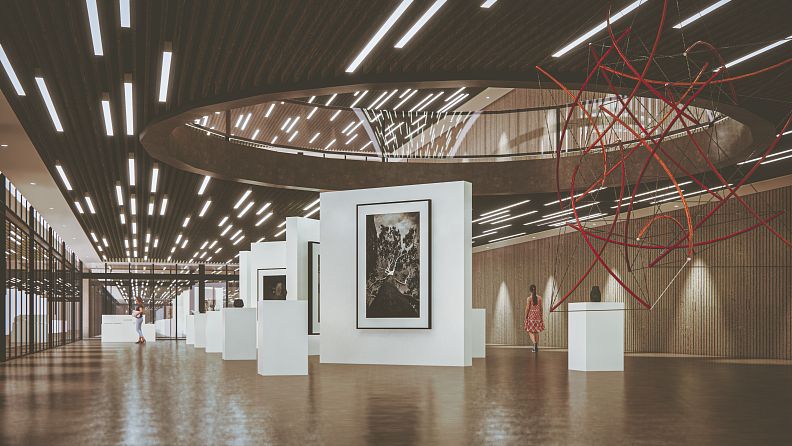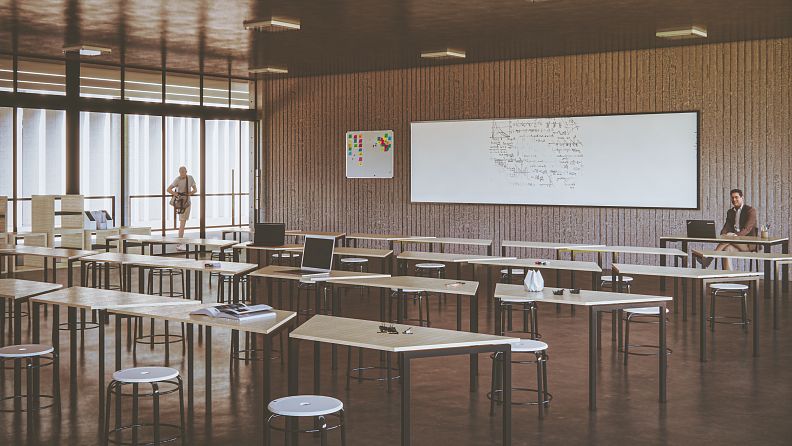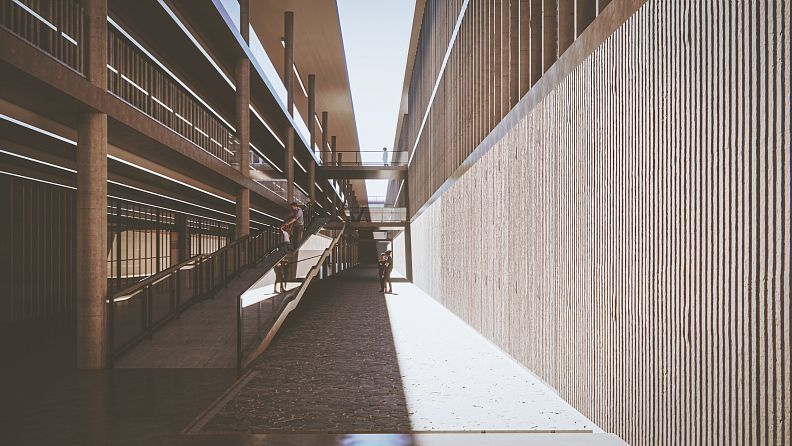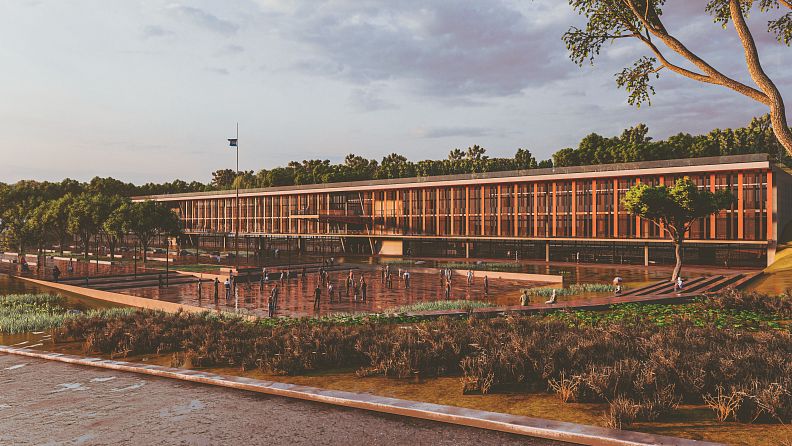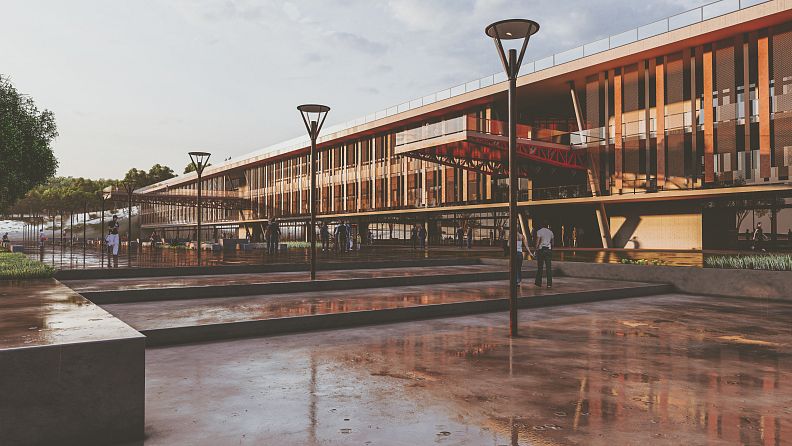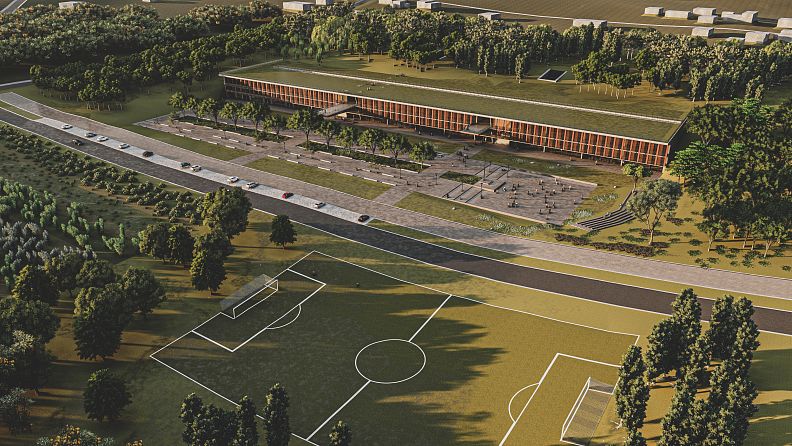Escuela de Bellas Artes de Tucumán

Project idea
The School of Arts strongly marked the cultural and artistic development of the northern region of Argentina as it continues to do today, however it remained for a long time without its own building. The idea consisted of taking as the basis of the architectural design the history of the Institution over time, its eternal struggle for a dignified space in society and according to its needs, its search for a true friendship, unity, brotherhood between the different paradigms that marked the School: The School is not only that of Today but also that of Yesterday. The two separate prisms is actually only one pierced by a slit: currently the new look of the institution closes the doors to the past, to its roots. There is a rift between the new and the old school. Therefore, the School should not only be a space for teaching classes but also for conservation, exhibition and contemplation, open to the new and valuing the old because they are the traces that marked the Institution and the culture of the province.
Project description
It is a functional and simple architecture that consists of two main blocks: The School and The Exhibition separated by a large slit of light. The building is located on a terrain with a strong unevenness in little development, so it is intended to play with it by generating a route through the building that allows the user to find himself at different levels of the terrain with a diversity of visuals. The School has painting, sculpture, ceramic, digital art, model and robotics workshops in addition to conventional classrooms, administration and inclusive bathrooms. They are characterized by being flexible spaces that can be expanded or reduced with mobile partitions combining the spaces according to the needs of the moment. All the classrooms and workshops spill out onto a linear square that follows the morphological dialogue of the building. The exhibition area is against the natural terrain, almost hidden from the building and it is a spacious and totally flexible space also with movable partitions. The traditional central courtyard ceases to exist, the meeting space is located in the linear square where there are a multiplicity of spaces to make use of them. Access to the School is at the highest level of the same and you descend through the building until you reach the large linear square, the lowest level of the land.
Technical information
The building is made up of two structurally independent volumes: the first, the exhibition sector works as a containment of the land, which is why it consists of large reinforced concrete retaining walls while the volume of the School is lighter and more permeable with floor-to-ceiling openings on all three levels. These two volumes are crossed by two important metal walkways that link them, generating exits as viewpoints towards the square and towards the grove on the upper level.
Documentation
Show PDF 1Show PDF 2Show PDF 3Show PDF 4Show PDF 5Show PDF 6Show PDF 7Show PDF 8Show PDF 9
